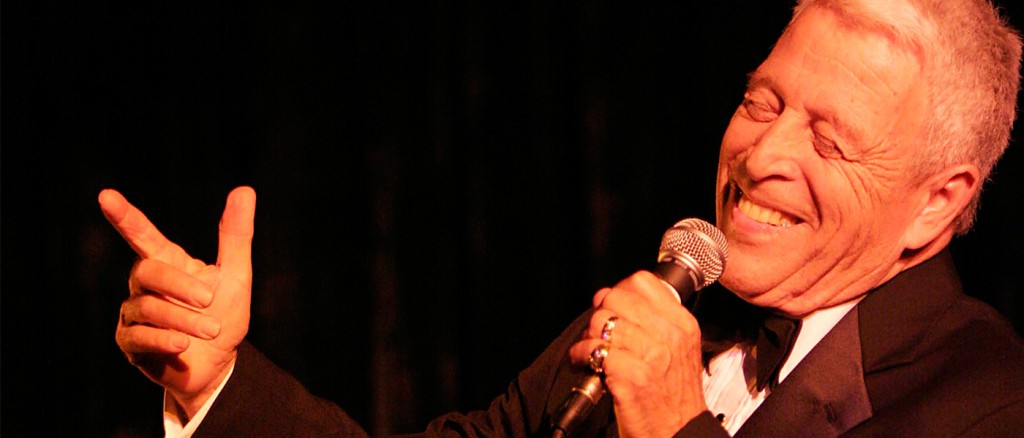Jimmy Cavallo’s no social activist. He never carried a protest sign or marched for civil rights. But as a groundbreaking jump-blues musician and bandleader, he did more than any other native Syracusan to usher black culture into the American mainstream.
An innately talented singer and saxophonist, Cavallo practically invented rock’n’roll. In 1949 he introduced the new music to Syracuse at a corner bar called Sorrento’s a half-decade before anyone had heard of Elvis Presley.
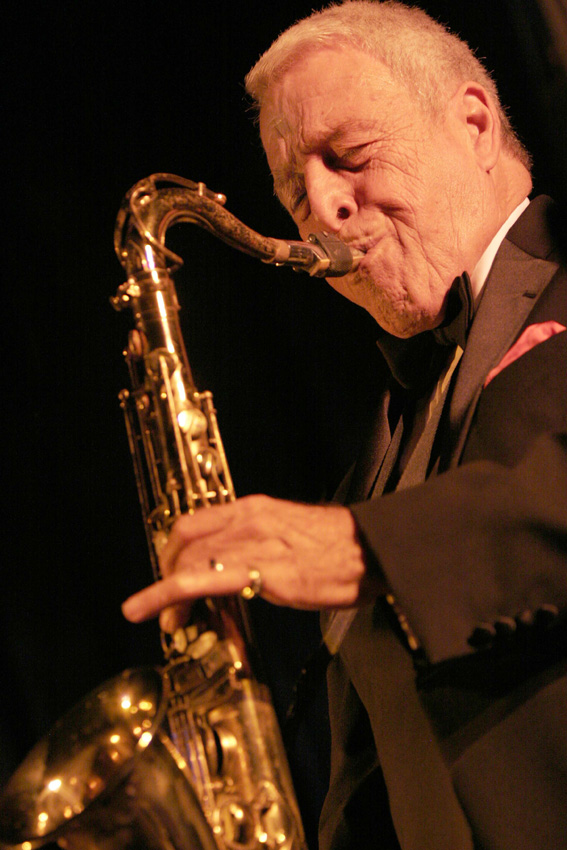
Before Cavallo dropped out of North High School at age 17 to join the Navy in 1944, he’d been making the scene at the Salt City’s black nightclubs, soaking up the sounds of what would eventually be called rhythm’n’blues.
“I sat in with black musicians all the time at the Penguin Grill on South State Street,” Cavallo recalled during a telephone interview earlier this month. “Sax Hunter’s combo welcomed me, and the drummer Steeple Jenkins. I sat in constantly with those guys at the Penguin and the Embassy and the 800 Club. They loved me.”
And Cavallo loved the music. “I had a feeling for it,” he says of the jump-blues that was popular at the time. He was especially taken by black saxophonist Louis Jordan and His Tympany Five, who scored massive hits on the “race record” charts with 1944’s “Is You Is or Is You Ain’t My Baby” and 1946’s “Caldonia.”
“You see,” Cavallo explains, “I’d been playing third alto in the big band at Prescott Junior High School, playing harmony lines. I like big band music, but being in a harmony chair used to drive me up a wall. I knew I had to do more than that. I wanted to be out front like Louis Jordan, playing the melody. So I wanted to lead a small group.”
As a kid, Cavallo learned to read music. Yet as trumpeter-singer Louis Prima once said, “I can read a bit but not enough to hurt me none.”
Because he’d been so well-accepted at Syracuse’s South Side jam sessions, when his Navy service took him to Washington, D.C., Cavallo haunted black nightspots in the nation’s capital and beyond. “I hung out at a lot of clubs in the South,” he recalls. “That was R’n’B. Some of those places were like chicken shacks with a little slide slot on the door where you’d identify yourself before they’d let you in.”
Cavallo’s alto sax was his key to the highway. His desire and determination earned him respect among musicians, both black and white.
“In the South, you had to be careful, because people frowned on it, the idea of whites and blacks mixing,” he says. “But I’d been around black people all my life, mostly musicians. I think of musicians like soldiers: They have a brotherhood. In the brotherhood of musicians, there’s no color line.”
Shagging in Bop City
Cavallo got his first taste of show-biz success in 1948 and ’49, playing black jump-blues at places like Bop City in Carolina Beach, N.C. “The kids down there were doing a jitterbug dance they called the Carolina Shag, and I gave it some kick,” he remembers. “The white kids were getting into the black music, but they couldn’t get into black clubs.”
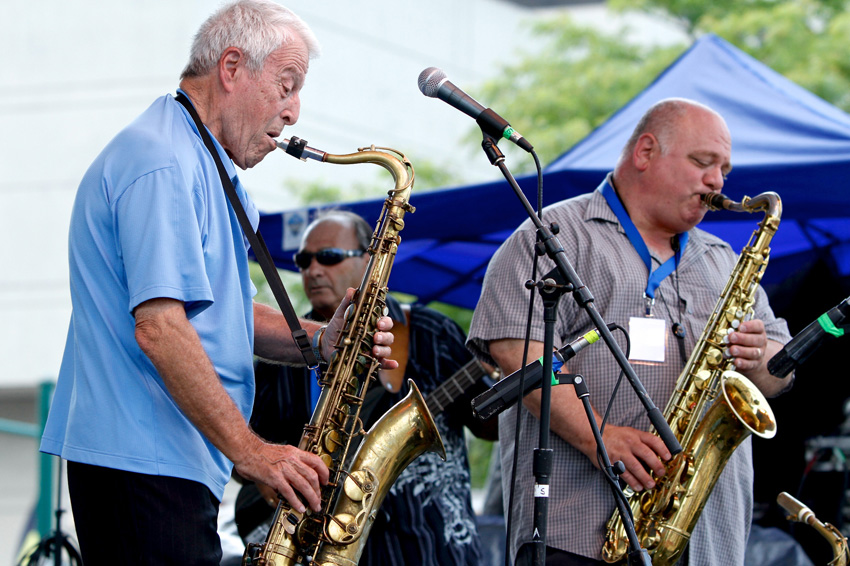
Instead, they filled whatever venues booked the all-white Jimmy Cavallo and the House Rockers. “We had a core of 50 or 60 fans who followed me all over the state,” he says. They danced the Shag to Cavallo’s renditions of “Early in the Mornin,’” “Good Rockin’ Tonight” and “Night Train.”
Around that time he became friends with black saxophonist Paul “Hucklebuck” Williams, who encouraged the young Cavallo to stick with the kind of music that kept the kids dancing. In 1949, Williams scored his biggest hit with a dance-craze number, “The Hucklebuck,” a song that Jimmy still includes in his repertoire.
Meanwhile, Cavallo’s place in Shag history has been confirmed. In 2005, he was inducted into the Carolina Beach Music Awards Hall of Fame.
While Cavallo got the Carolinas jumpin’ to the rhythms of urban black musicians, President Harry Truman — one of our nation’s squarest leaders — decided to make civil rights a national issue. In 1948, South Carolina Gov. Strom Thurmond led a group of Southern Dixiecrats as they walked out of the Democratic Convention when Truman’s civil-rights platform passed. Truman integrated the U.S. military in July 1948 after black activists Grant Reynolds and A. Philip Randolph organized the Committee Against Jim Crow in Military Service and Training.
During his Carolina years, Cavallo actually hired a black trumpeter. “I can’t remember the guy’s name, unfortunately, but we would tour tobacco warehouses where they put on big dances over in the Raleigh-Greensboro area. Once I remember we stopped for lunch at a little diner, and the man said, ‘You can’t come in here with him.’ Colored customers had to order their food through a window in the back, so the rest of us in the band — all white guys — we all got in line with him out back. That was Deep South crap, 1946, ’47, ’48. I remember seeing bonfires one night and a local guy told me, ‘You don’t even want to know what that is.’ It was the Ku Klux Klan, yeah! Very heavy!”
But change was in the air. Finally in June 1949, Billboard magazine dropped the term “race records” aimed at a single demographic to the more inclusive “Rhythm and Blues” aimed at a wider audience.
House-Rocking at Sorrento’s
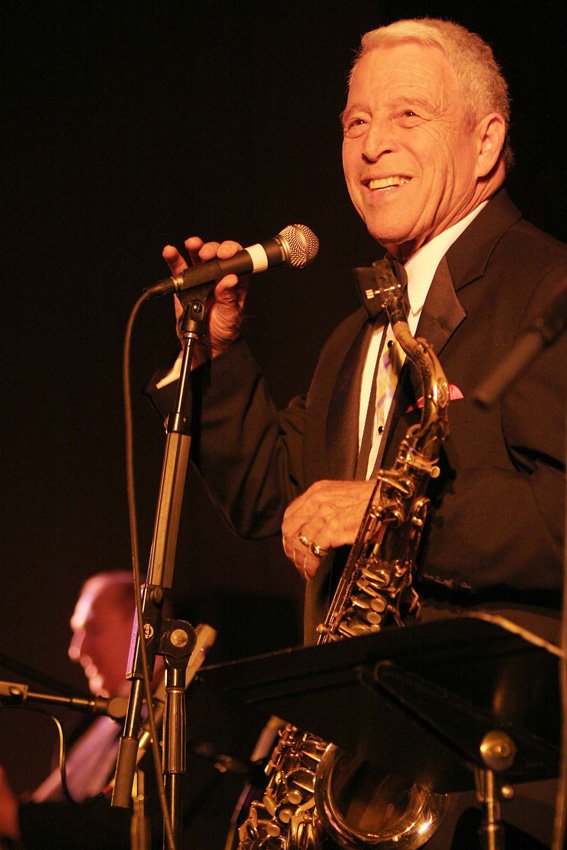
After finishing out the summer of 1949 at Carolina Beach, Cavallo moved back to Syracuse, where he switched to tenor saxophone, the instrument favored by artists such as Illinois Jacquet, Bullmoose Jackson and Jimmy’s mentor, Paul Williams. He and his House Rockers, including bassist Sam Barone, drummer Al Antonello and pianist Mike Peluso, began a three-year stand at Sorrento’s at the corner of Lodi and Division streets.
Owned by his uncle, Red Monaco, Sorrento’s was a tiny corner restaurant that could accommodate fewer than 200 patrons, but it soon became the rockingest place in town. The House Rockers held forth there most weekends.
One-time New York state jitterbug champion Bob Luongo (known to many for his Bob’s Barkers hot dog franchise) has fond memories of Sorrento’s. “It was a very cozy spot,” Luongo says. “The bar was always packed, and it was really the place to be when Jimmy was there singing and playing the horn. When you hear Jimmy’s music, even now, you’ve just gotta dance!”
Luongo recalls a few times when a few black folks walked into Sorrento’s to hear Jimmy’s honeydripper voice and honkin’ sax, but he said everybody was friendly. Cavallo remembers it a little differently, however.
“Clubs in the North weren’t restricted like clubs in the South,” he recalls, “but there was still prejudice up here. You could even see it at Sorrento’s. Whenever black customers came in, everybody froze up, like they’re saying, ‘What are they doin’ here?’ Turns out they were students from the (Syracuse University) Hill. My uncle served them. He never threw them out, but you could feel a vibe in the crowd.”
Beach Blasts at DiCastro’s
In the summer of 1950, Cavallo started a steady gig at DiCastro’s in Sylvan Beach. He’d play occasional Fridays and Saturdays, plus Sunday matinees. Rosario “Roy” Barone, the younger brother of bass player Sam Barone, remembers many a pilgrimage to the hotspot on the shore of Oneida Lake.
“Sure, we could see him at Sorrento’s, but that was a little place,” Barone says. “For us, when we were young guys, what we’d like to do was pile into one of our cars and head over to Sylvan Beach to catch him at DiCastro’s, a much bigger place that held a lot more people. And it would be packed. There were always a lot of girls there and everybody danced in those days, so that was a good way to meet young ladies. And everybody loved the music.”
Cavallo’s combo routinely drew between 1,000 to 1,300 at DiCastro’s, which later became known as Pfohl’s Beachouse.
An anonymous Internet poster recalls being transfixed by the scene there, even though he wasn’t old enough to get in. “I was too young to enter the club, but my older sister was a big fan while I had to listen from the outside,” he wrote. “Listening outside wasn’t too bad because in those pre-air conditioning days all the doors and windows were left open.”
Ron Wray, known as the “Syracuse Music Authority,” says Cavallo was highly sought-after by area club owners. “They’d literally fight to get him into their places,” Wray says. He played the Clover Club, Lorenzo’s, Memory Lane, the StarLite, Andre’s Tic Toc Club and Luigi’s in Auburn. “His popularity spread to Colgate and Cornell universities. Everyone was dancing the jitterbug and forming endless circles while Jimmy played his horn on top of bars and on tables.”
That kid at DiCastro’s wasn’t the only underage rock fan fascinated by Cavallo. Circa 1952, Ron Wray reports, “Local police in Endicott had to close a club as 12- and 13-year-olds flocked to hear Jimmy sing, ‘Don’t Let Your Ding Dong Drag in the Dirt.’” They just don’t write song titles like that anymore!
Freed, Flicks and Singles
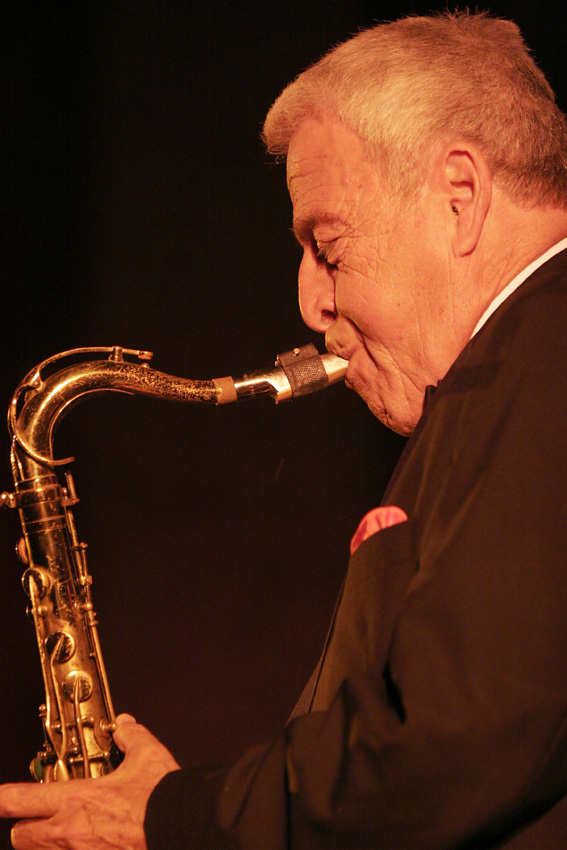
In 1951, the House Rocker cut two singles for the tiny BSD label, in the basement of the home of the label owner, Angelo Pergolito. BSD 1004 was “Ha Ha Ha Blues”/”Yeah! Yeah! Yeah!” More interesting was BSD 1005, with its A-side cover of Jimmy Preston’s “Rock the Joint,” issued a solid year before Bill Haley’s version. The B-side featured Cavallo’s own “Leave Married Women Alone,” co-written with Diz Utley, who had played in his North Carolina band.
By 1952, Cavallo had contracted with the Moe Gale Agency in the Big Apple. “So in 1953, ’54, ’55, I was on the road,” he recalls. “Gale put me on a black circuit. They booked me at Sparrow’s Beach, in Annapolis, Md.” Sparrow’s Beach was one of two Chesapeake Bay resorts that catered exclusively to African-Americans between the 1930s and the 1960s.
“It was strictly a black beach,” Cavallo remembers. “No whites could go in there. They had like the Buddy Johnson Big Band and Arthur Prysock, who was a great singer, (tenor man) Red Prysock’s brother. They put me on that circuit. We were the only white band there.”
History had never been his favorite subject, and Cavallo thought of Maryland as a Northern state, but it sat just below the Mason-Dixie Line. Once when he played during a battle of the bands at the Surf Club in Baltimore with Arthur Prysock, he was shocked that Prysock’s musicians were barred from interacting with audience members between sets.
In 1956 everything changed for Jimmy Cavallo. The Gale Agency hooked him up with Alan Freed, the influential deejay at WINS in New York City. The House Rockers auditioned for Freed during one of his Rock’n’Roll Party broadcasts, and he helped them score a deal with Coral Records.
“Freed was a real gentleman, always nice as could be to everyone,” Cavallo says. “But he always had a piece of the action on everybody he pushed.”
Cavallo appeared at Freed’s legendary Brooklyn Paramount shows with Fats Domino and Big Joe Turner, followed by a star appearance in Freed’s 1956 cult movie classic Rock, Rock, Rock, which also featured then-13-year-old Tuesday Weld. He subsequently made history as the first white act at Harlem’s Apollo Theater, which the House Rockers played in December 1956 to promote the film eight months before Buddy Holly and The Crickets hit the stage there in August 1957.
At the Apollo, Cavallo’s friend, black saxophonist Big Al Sears from the Sam “The Man” Taylor Big Band, sat in the audience with Jimmy’s wife, Mary. “I guess he was going to protect her because everybody else in the audience was black,” he says, laughing.
Cavallo vividly recalls filming his two scenes for Rock, Rock, Rock at a cavernous old church in the Bronx. “The place had great acoustics,” he said, “a natural reverb sound.”
He and the band lip-synced to their recordings of the title tune, “Rock, Rock, Rock,” and “The Big Beat.” It took four takes to nail the title tune because Cavallo wasn’t comfortable lip-syncing. “The Big Beat” took fewer tries.
“I remember (the movie’s teen idol co-star) Teddy Randazzo was there cutting up, writing the words to the songs on a blackboard while a bunch of extras danced in front of the band. It was fun. I found out that one of the dancers, a gal with a little ponytail, was Valerie Harper.” Then age 17, Harper would later gain television fame on The Mary Tyler Moore Show and her own spinoff, Rhoda.
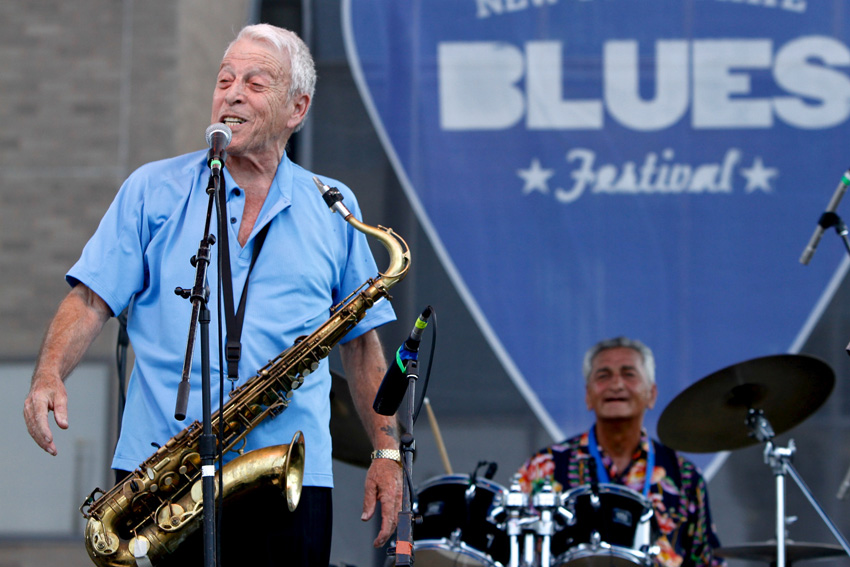
Unfortunately, the movie’s title track rocked all right but failed to put a dent in the charts despite Freed’s dogged promotion. Unlike his friend Bobby Darin, who enjoyed a million-seller with “Splish Splash” in 1958, Cavallo never scored a big hit single.
Cavallo also lacked a personal manager. “If you don’t have a personal manager to take that song, ‘Rock, Rock, Rock,’ and get it out there and get it to those disc jockeys and get it played, you’re never gonna get the hit record,” he says, sighing.
Regardless, Freed hired the House Rockers again to appear in the 1959 movie Go, Johnny, Go, starring Jimmy Clanton and featuring Chuck Berry, Richie Valens, Eddie Cochran and The Cadillacs. The House Rockers weren’t even billed on the lobby card.
But Cavallo’s brief brush with fame produced some memorable recordings. For instance, the House Rockers waxed the unforgettable “Fanny Brown,” an R’n’B hit previously recorded by Roy Brown and Wynonie Harris, at New York City’s Nola Studio.
For Coral they cut 12 sides, including many originals. They toured with Fats Domino, played a summer-long engagement in Wildwood, N.J., played Las Vegas and from 1959 to 1965 made more records for the Sunnyside, Hand, Darcy and Romar labels.
In 1961 Cavallo returned to Central New York as the emcee at Dominick Bruno’s Three Rivers Inn, north of Liverpool.
Luongo was often there. “Jimmy and the band would warm up the crowd and then he’d introduce the headliner, Tony Martin or the McGuire Sisters or whoever,” Luongo recalls. “The funny thing is that he was one of the stars himself.”
Rock’n’roll was changing, and Cavallo listened to his wife, Mary, when she advised him to add some sweeter songs to his repertoire. “I was really just a blues shouter up until that time, but she said to me, ‘Jimmy, you have such a wonderful singing voice. How about singing a real good song, some softer stuff?’ So I worked up a version of Frankie Laine’s ‘Georgia (On My Mind).’ Yeah, Frankie did it even before Ray Charles.”
After that Cavallo tackled material by Frank Sinatra, Tony Bennett and Nat King Cole, songs that he still includes in his shows today.
In 1968, Jimmy and Mary moved to Pompano Beach, Fla., where they continue to reside. Even at age 88, Cavallo is in remarkably good health, occasionally fighting off allergies that can lead to laryngitis, which happened to affect him at last year’s edition of downtown Syracuse’s Festa Italiana, where he has been a fixture for two decades.
“The music has really been a blessing to me,” Cavallo concludes. “I’m extremely happy to wake up every morning and know I’m going to go to work and make my audience happy. It’s a fact: Making you happy makes me happy.”


